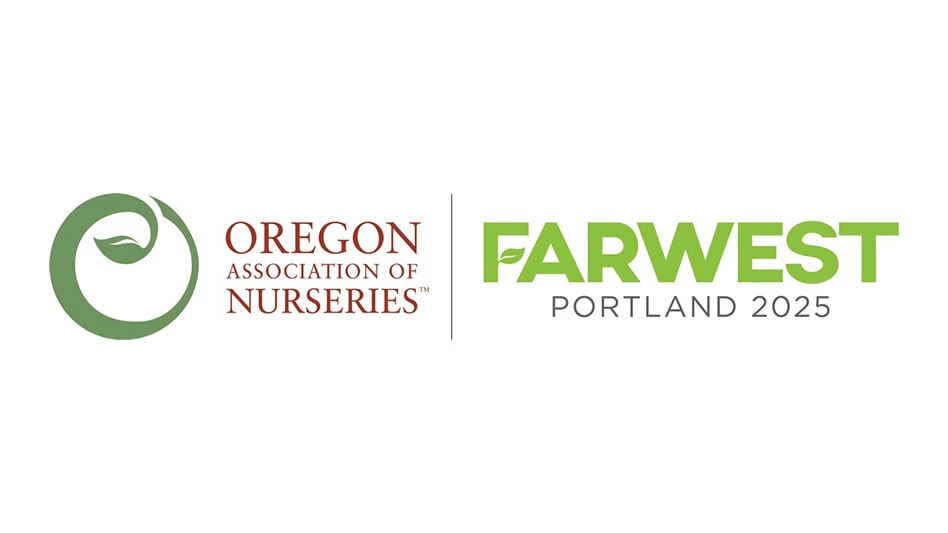|

A high growing substrate pH, algae on floors and clogged filters can all arise from different aspects of water "quality". High alkalinity water (a chemical factor) can cause the pH of a growing substrate to increase over time leading to iron deficiency in crops. High microbial density (a biological factor) can affect growth of biofilm in irrigation lines leading to clogged pipes and emitters. Total Suspended Solids (TSS) concentration is a physical measure of particles in the water related to the need for additional filtration. If raw water quality is treated with a technology such as copper ionization or sodium hypochlorite, the active ingredient concentration of the system should be monitored to ensure safe and effective treatment.
Chemical water quality
Most growers probably think of water quality as the chemical characteristics of water that affect nutrient management. Monitoring tests and tools to measure chemical factors are available (Table 1) along with quality guidelines (Table 2) for key chemical parameters, including pH, alkalinity, electrical conductivity (EC), and the concentration of individual ions.
Water pH is a measure of acid (H+) concentration in the water. As pH decreases, the concentration of acid increases. Low pH water (below 7) is therefore acidic, high pH water (above 7) is basic and a pH of 7 is neutral. A typical water pH for growing floriculture crops is in the range of 5.4 to 7.0 (mildly acidic), although a broader pH range can be successfully managed.

Impact of water pH
Water pH is important for dissolution, reactivity and efficacy of chemicals and pesticides. For example, when chlorine (from solid calcium hypochlorite, liquid sodium hypochlorite or gas chlorine) is incorporated into water, the reactions are pH dependent. At low pH, chlorine dissolves into hypochlorous acid, which is a strong sanitizer. However, at high pH there are more hypochlorite ions that are much weaker sanitizers. Therefore, chlorine is more effective at controlling pathogens below pH 7.5.
The plant growth regulator Florel (ethephon) is another chemical that is much more active at a low spray tank pH (around pH 5), whereas the PGRs daminozide and paclobutrazol are less sensitive to pH. Growers can save on chemical costs and increase efficacy by checking the pH tolerance of agrichemicals. Information sources include the pesticide label or manufacturer, or refer to the online "Indicate5 Directions and Ideal Pesticide pH Chart 2008" (www.ggspro.com/2.0/bulletins.html) from Griffin Greenhouse and Nursery Supplies Inc.
Water alkalinity
Water alkalinity differs from water pH. Alkalinity is mainly made up of carbonates and bicarbonates, and can be considered as the dissolved liming content or acid buffering capacity of water. Water that is high in alkalinity, above 150 parts per million calcium carbonate (CaCO3), tends to increase the pH of the growing substrate over time because additional lime is being added from the water with each irrigation.
Often, a high substrate pH results in plant deficiencies in micronutrients such as iron. Water that has low alkalinity is more likely to lead to a low substrate pH over time. When the substrate pH is low, iron and manganese toxicity may result from excessive solubility and uptake of those elements by plants.
Typical alkalinity concentrations in floriculture production range from between 0 (for rain or reverse osmosis water) to 6 milliequivalents (0 to 300 ppm of calcium carbonate equivalents). The "ideal" alkalinity concentration depends on many factors including the type of fertilizer used, as well as how frequently clear water is applied to a crop.
High alkalinity can be reduced with the addition of a strong mineral acid such as sulfuric acid. See the North Carolina State University website Alkalinity Calculator (www.ces.ncsu.edu/depts/hort/floriculture/software/alk.html) to calculate acid rates. High alkalinity can also be counteracted by increasing the ammoniacal nitrogen concentration (acidity) of the fertilizer.
Low alkalinity can lead to low pH problems (micronutrient toxicity), but can be better managed by selecting less acidic (low ammoniacal nitrogen, high nitrate nitrogen) fertilizers.
Electrical conductivity
Water electrical conductivity is a measure of total concentration of soluble salts. Irrigation water with a low electrical conductivity (0.0 to 0.5 milliSiemens per centimeter) is advantageous, because soluble salts are less likely to accumulate in the growing substrate. Irrigating with low-electrical conductivity water usually does not require leaching during crop production because problem ions such as sodium and chloride are not likely to be at high concentrations when water electrical conductivity is low. Reduced leaching results in less water use and minimizes fertilizer runoff.
Plant species vary in their tolerance of high electrical conductivity water (greater than 1.5 mS/cm). If the salts from the water are allowed to build up in the substrate, then plant growth is often stunted. Plants may wilt even when the substrate is moist.
High electrical conductivity can cause marginal leaf burn especially in sensitive crops such as heliotrope, New Guinea impatiens, pentas and ferns. High water electrical conductivity levels can be managed by treating with reverse osmosis to remove some or all of the salts, blending the high electrical conductivity sources with a water source with lower electrical conductivity (such as captured rain water) or through periodic leaching of the growing substrate.
A moderate electrical conductivity (above 0.5 mS/cm) is desirable when ionizing copper for water sanitation, because pure water does not conduct the electricity needed to convert solid copper into dissolved ions. When water electrical conductivity is low, copper ionization can follow after inline injection of water soluble fertilizer, or copper surface area and contact time can be increased.
Nutrient, ion concentrations
The concentration of the individual nutrients nitrogen(N), phosphorus (P), potassium (K), calcium (Ca), magnesium (Mg), sulfur (S), iron (Fe), manganese (Mn), zinc (Zn), copper (Cu), boron (B), and molybdenum (Mo) in the water should also be checked, along with ions that are not essential nutrients, such as sodium (Na), chloride (Cl), aluminum (Al), and fluoride (F). When irrigating with water-soluble fertilizers (termed fertigation), the nutrient solution is a blend of ions in the water plus the ions added from the injected fertilizers and/or acid. Therefore, although low concentrations in the irrigation water of some nutrients can be beneficial, high concentrations of one or more nutrients may require adjustments in a fertilizer program.
Several other issues can occur when individual ions are excessively high. For example, high concentrations of calcium and iron can be antagonistic to plant uptake of magnesium and manganese, respectively. Water that is high in calcium and magnesium is known as hard water. Most plant species are tolerant of high calcium and magnesium concentrations (i.e., combined concentrations exceeding 150 ppm). However, overhead irrigation with hard water can leave unsightly white salt deposits on the foliage, especially with mist propagation.
High micronutrient concentrations (particularly boron) can be phytotoxic. High iron concentrations in the water can lead to staining of foliage and growth of bacteria that clog irrigation lines. Significant concentrations of sodium and chloride increase the water electrical conductivity and can disrupt nutrient uptake, without contributing to plant growth. Ions such as aluminum and fluoride are not essential plant nutrients but can be toxic to plant growth above threshold concentrations.
Measuring ions
Measurement of individual ions generally requires laboratory analysis. Refer to the laboratory report to interpret high or low values. If you use Table 2 as a guide, consider that a "manageable range" is broader than a "target" range. There is no perfect irrigation water for crop production.
Each water source comes with its own set of challenges. Most problems can be overcome as long as the concentration of alkalinity, nutrients or waste ions in the irrigation water is within the "manageable" range in Table 2. This manageable range can be achieved either through proper management of alkalinity or by supplementing or balancing the nutrients contained in the water with those supplied by acid or chemical fertilizers.
Inexpensive crop insurance
Money and time spent on water quality monitoring is a form of crop insurance that will save you more expensive resources needed to fix problems. Regular monitoring of chemical water quality does not need to be expensive, with a complete water test one to four times a year (depending on whether your water quality tends to change between seasons), in combination with in-house testing of pH and electrical conductivity.
Table 2. Guidelines for manageable ion levels contained in water.
Values given in parts per million (mg/L) unless otherwise noted. A “manageable” range in this table indicates that crop health can be acceptable with proper adjustment of the ions in the water using acid or chemical fertilizers, leaching, or other management changes. |
 |
.jpg)
Paul R. Fisher is associate professor and extension specialist, Dustin Meador is graduate student, and Jinsheng Huang is post-doctoral research scientist, University of Florida, Environmental Horticulture Department, (352) 273-4581; pfisher@ufl.edu. William R. Argo is technical manager, Blackmore Co.
Sponsors of the Water Education Alliance for Horticulture (www.watereducationalliance.org) include AquaPulse Systems, BioSafe Systems, Blackmore Co., Chem Fresh, Chlorinators Inc., Dramm Water, Ellepot USA, Fafard, Greencare Fertilizers, Griffin Greenhouse and Nursery Supplies, Hanna Instruments, Phyton Corp., Pindstrup, Premier Horticulture, Pulse Instruments, Quality Analytical Laboratories, Sun Gro Horticulture and Trueleaf Technologies. USDA-ARS Floriculture and Nursery Research Initiative and the Young Plant Research Center (floriculturealliance.org) also supported the underlying research.
The laboratories and instruments mentioned are intended as examples of resources, not an endorsement of specific suppliers or brands.
|




.jpg)






